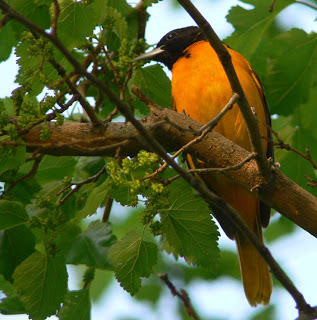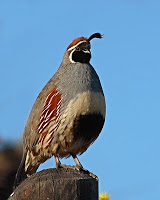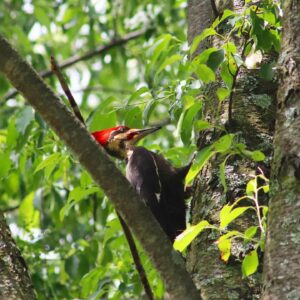 |
| Prairie Warbler |
For a birder, or a person who loves wildflowers, it’s hard enough learning the name and appearance of the bird or flower so you can recognize them in the field. There are so many, and often they tend to resemble each other in many ways. But the actual name of the bird usually doesn’t help at all in identifying the bird. For example, this Prairie Warbler doesn’t live in the prairie, but can be found in brushy pastures, low pines, and mangroves. How in the world did these birds receive the names we struggle so to learn? And why, for heaven’s sake, are they so confusing?
 |
| Red-bellied Woodpecker |
The Red-bellied Woodpecker is a classic example of a bird with a misleading name. Most of us only see the black and white back and red on its head. Where is the red belly it is named for? In the early days of ornithology, say the 1700’s and 1800’s, naturalists had no binoculars or spotting scopes to take into the field. Instead, they “collected” the birds they wanted to study with a shotgun! John James Audubon, artist, early ornithologist, and now synonymous with bird conservation, said, “I wish I had eight pairs of hands, and another body to shoot the specimens.” He often shot 50 or more individuals of the same species so he could make comparisons of them.
 |
| Red belly visible on Red-bellied Woodpecker |
When a dead Red-bellied Woodpecker is laid on its back, the pale wash of red on the belly becomes immediately apparent, but since woodpeckers normally clutch the bark tightly we don’t often get to see their bellies. These early ornithologists were crack shots, and also did their own taxidermy. Audubon would pin the bird to a board marked with grid lines to pose it in a lifelike position for his drawings. These collectors donated their collections to museums which still have them. It’s not very attractive though, to me at least, to look at rows of dead birds lying on their backs with their little feet all curled up.
 |
| Lincoln’s Sparrow |
 |
| Baltimore Oriole |
Those early ornithologists had another problem as they wandered through the American wilderness looking for birds. They didn’t seem to realize that these birds migrated around the country, so they named the bird for the first place in which it was found. Thus, the Baltimore Oriole, the Kentucky Warbler, or the Nashville Warbler, can be found in many other areas of the country.
 |
| Carolina Chickadee |
Sometimes we birders get lucky and birds are named for the sounds they make. Chickadees rattle chick-a-dee-dee-dee as they hang upside down on the branches searching for the tastiest bugs. Blue Jays call their harsh jay-jay-jay sound along with other melodic songs, as well as mimicking hawks and other birds. The Northern Mockingbird was named for its ability to mimic just about anything it hears. Now they can be found singing like cell phones, so some day we may need to rename them!


